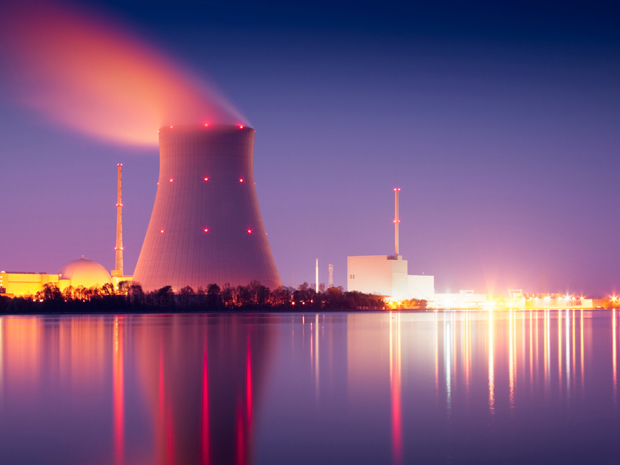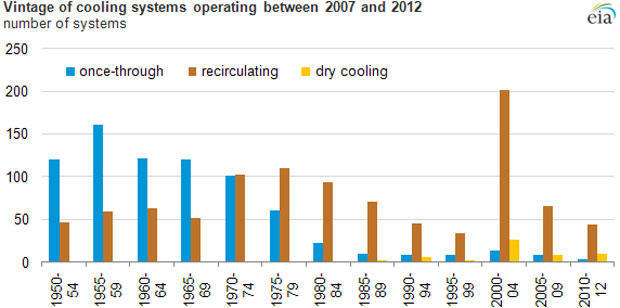In the past half century, power plants in the United States have made considerable strides in water use, but there is still a long way to go, according to new figures from the U.S. Energy Information Administration (EIA).
More than 70 percent of electricity in the United States comes from plants that require some water for cooling. Most plants that generate steam to make electricity use water to re-condense the steam for reuse. While many plants return that water to the environment, others use less water but lose that water to evaporation in the cooling process. In total, it's a huge demand on fresh water supplies: More than 40 percent of fresh water used in the United States is withdrawn to cool power plants.
Originally plants were once-through systems, where the water was only used once and then put back into the ecosystem.
But other cooling techniques have been adopted in newer plants, though perhaps not fast enough given ongoing drought conditions. Because of environmental standards, most new plants use recirculating water systems and, to a lesser extent, dry cooling. The trend towards recirculating plants began in the 1960s, but the long lead-time on the switch over still means that many power plants still in use are once-through water systems. In the United States, 43 percent of plants do not reuse water, according to the EIA.

The water needs of thermal power plants are increasingly an issue in water-strapped areas. California is in its third year of drought. Not only will there be less water in the West to cool power plants, but there will also be less water for hydropower this year, according to energy outlooks.
The amount of water is just one issue. Last summer, for example, the Pilgrim nuclear power plant in Massachusetts was shut down because the temperature of the Cape Cod Bay water that it uses for cooling was too warm.
The move to less water-intensive energy production in the United States should quicken in coming years, but not necessarily because of water shortages. Many of the oldest coal-fired power plants, which make up over half of the once-through systems, will have to retire in the face of new environmental regulations for air quality.

More recently, power plants have also moved to dry cooling, which condenses the steam by using cool air that passes over the water in huge towers. Dry cooling is even more expensive than recirculating water, however, and the fans that are used to move the air around the water can lessen the efficiency of the power plant.
Even with the move away from once-through plants, a study from the Union of Concerned Scientists [PDF] last year found that the power sector isn't moving quickly enough to retire old power plants in the face of increasing water shortages.
Wind power and solar PV could be one part of the solution as the renewable technologies become more cost-competitive with traditional generation. But renewable energy is not always a solution. Solar thermal plants require a lot of water and some in California are already facing reduced power output because of drought.
The U.S. Environmental Protection Agency is considering changes to cooling water regulations that will minimize environmental impact, according to the EIA. The potential change could mean expensive upgrades for existing power plants, another factor that could influence whether to keep some older plants running. A ruling on the regulation is expected this year.





